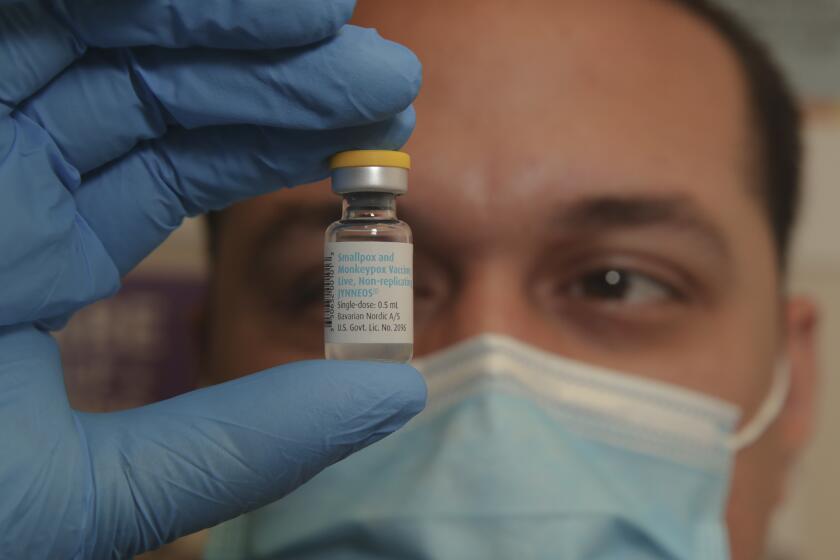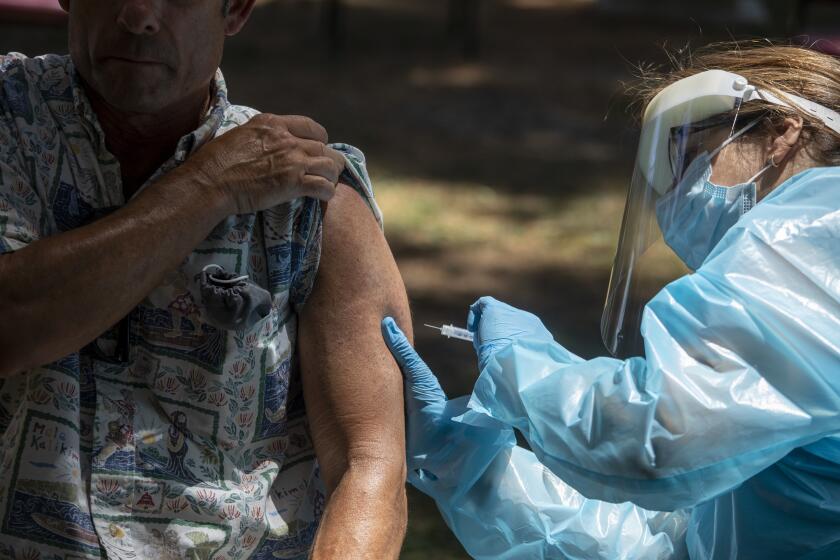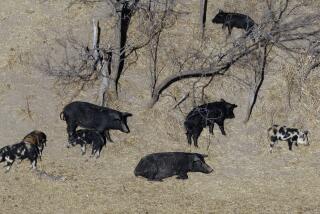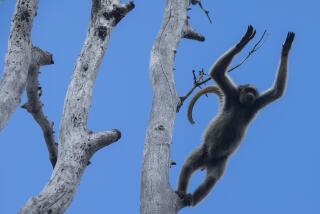Scientists’ big monkeypox fear: It will spread to wild animals and be here to stay

Maureen Miller, an infectious disease epidemiologist and medical anthropologist at Columbia University, was not surprised to learn this week that an Italian greyhound in Paris had become the first dog known to catch monkeypox from a human.
The U.S. Centers for Disease Control and Prevention along with the World Health Organization have cautioned since the start of this outbreak that the disease could spread to pets. Many of the routine ways dogs show affection for owners — licking their faces, nuzzling their skin, leaping up into their bedding — are potential pathways for viral transmission.
The CDC offers clear guidance for isolating household animals from infected people, and potentially infected pets from one another. Dogs should be able to recover from the virus just like humans do.
That’s not the human-to-animal transmission scenario that worries Miller.
“It’s rodents that scare me,” she said.
If the virus becomes established in wild animals like rats or squirrels, eradicating it becomes exponentially harder. Rather than being limited to humans, it would take up residence in countless tiny vectors that in turn could infect other animals, pets and people.
Miller said she feels “horrible” for the greyhound, “but there are clear protocols on how to manage infected pets. ... I would only worry about it with spillover to rodents.”
She is not alone.
The prospect of monkeypox becoming endemic in rodents — an order of mammals notorious for their hardiness, mobility and effectiveness at spreading pathogens — is “the thing that keeps me up at night,” said Anne Rimoin, a UCLA epidemiologist who has studied it for the last two decades.
“It’s certainly a possible scenario,” Rimoin said, “and the more opportunity the virus has to spread, the more it moves into the probable from the possible.”
How monkeypox spreads, how to get a vaccine and more: Your frequently asked questions about monkeypox, and answers from experts.
The U.S. has logged more than 13,500 monkeypox cases since the first patient was reported in Boston on May 19. The disease is spread primarily through sustained skin-to-skin contact, and less effectively through infected clothing or sheets.
The overwhelming majority of cases in the current outbreak in Europe and North America have been among men who have sex with men. But “there’s no reason, no biological reason, why they are the only risk group,” Miller said. “And they’re not.”
Should the virus spread more widely beyond that specific demographic, there is a good chance that non-human mammals will play a crucial role.
Unlike smallpox, which exclusively infected humans, this particular orthopoxvirus is less discriminating in its choice of mammal host. Anteaters, hedgehogs and chinchillas can definitely contract it, and many species of rats and mice are suspected to be vulnerable as well. There have been no cases documented yet in pet cats, though since cats can get other types of orthopoxviruses, there’s a good chance they can get monkeypox too.
Monkeypox DNA was recently detected in Los Angeles wastewater, as it has been for almost two months in San Francisco sewage.
There are a number of relatively straightforward ways the virus could spread to the rodent population. Infected pets could pass it along through bites, scratches, feces or urine. Rodents that burrow into garbage could come in close contact with contaminated bedsheets, clothing or bandages.
None of these outcomes are certain, but they’re all realistic possibilities.
“Possible is enough for us to take it seriously, because the possible can turn into a probable and we don’t want that to happen,” said Joseph N.S. Eisenberg, an epidemiologist at the University of Michigan. “When you wait to act until you are sure there’s a problem, it’s often too late.”
In past outbreaks involving this poxvirus, animals — especially rodents — have been the primary source of transmission to humans.
The disease is endemic in rural parts of western and central Africa. It spreads through close contact with infected animals, typically during hunting, farming or, in many children’s cases, playing with squirrels.
Monkeypox cases are rising exponentially, dimming hopes that officials can quickly gain control of the virus that has the potential to establish a lasting foothold.
Scientists have not yet confirmed which wild animal species are the natural hosts of the virus, but the World Health Organization has identified rodents as the most likely candidate.
Birds, reptiles and amphibians don’t appear susceptible to other types of orthopoxviruses, a group that includes monkeypox and its far deadlier cousin smallpox.
The name is misleading, as the virus is found much more often in rodents than in primates. Orthopoxviruses are often named for the animals in which they are initially identified, and this one was first confirmed in a group of lab monkeys in Copenhagen in 1958.
The WHO announced this month that it will rename the virus and its two primary strains, which were previously labeled according to the regions in Africa where they circulated.
The disease’s previous outbreak in the U.S. was rodent-driven. In 2003, a Texas animal distributor housed prairie dogs in the same cages and bedding as exotic animals imported from Africa that turned out to have the virus. Starting with a 3-year-old Wisconsin girl bitten by her pet prairie dog, all 72 suspected or confirmed cases had contact with those animals.
That outbreak was contained within two months, before the virus had a chance to establish itself in the local animal population. At the moment, there are no known animal reservoirs for this virus outside western and central Africa.
For many Californians suffering from monkeypox, getting Tpoxx has not been simple. The smallpox drug has not yet been approved by the FDA to treat monkeypox.
Veterinarians and epidemiologists caution that could easily change. The CDC’s guidelines on isolating pets with confirmed or suspected infections are intended both to safeguard the animals’ health and to prevent the virus from spreading to wild mammals.
Pets exposed to a person with the disease should be quarantined from other animals for 21 days, according to the CDC guidelines. In a warning reminiscent of the early days of the COVID-19 pandemic, the agency cautions anxious pet owners not to wipe down their animals with household cleaners or chemical disinfectants.
“The longer the virus stays with us and the more species get infected, this increases the chances to have it circulating in other animals,” said Eman Anis, a veterinary microbiologist at the University of Pennsylvania School of Veterinary Medicine.
Humans and their pets can be vaccinated, she said, but “once it makes its way to the wild, it would be hard to control it.”











